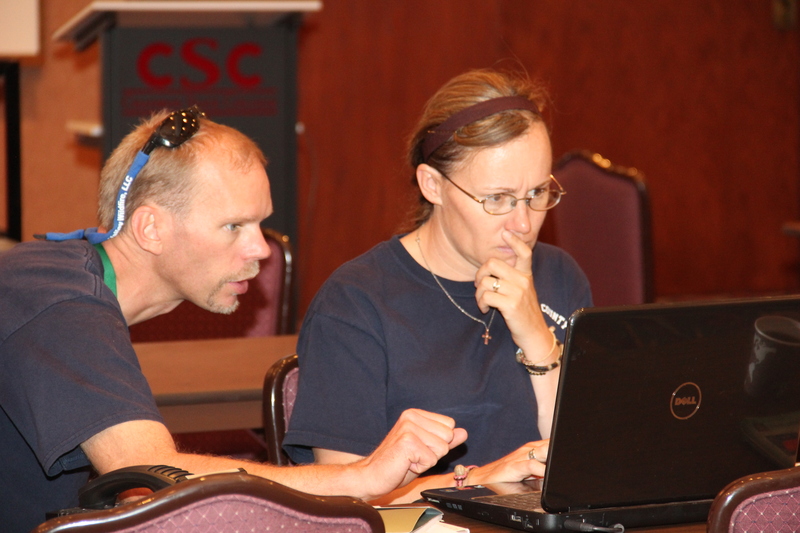Wildfire Incident Management Team on campus and ready

A command team designated to help extinguish the wildfires in northwest Nebraska is waiting in readiness at Chadron State College. If all goes well, the team won't be needed.
Randy Rhine, CSC interim president, said the campus is serving as base for the New Mexico Incident Management Team which began arriving in Chadron on Wednesday, July 25.
Dale Grant, CSC vice president for administration, worked with officials of the Type 2 IMT to arrange meeting space in the Student Center. CSC also has opened its residence halls and food services to accommodate fire management personnel. About 55 people stayed in the High Rise Residence Hall on Wednesday night.
IMT public information officer Annette Grijalva-Disert of Silver City, N.M., said the group has not become engaged in the firefighting effort, and is hopeful that it won’t be. It was assigned to the region because of the Ash Creek Fire in rugged country about 20 miles southwest of Chadron. Because crews made great gains on that fire Wednesday, the effort has not needed the resources or level of coordination that comes with the Type 2 IMT. Media reports Thursday indicated that the fire had burned about 2,000 acres and was 80 percent contained – up from 20 percent Tuesday when its area tripled in size.
Despite the progress on the Ash Creek Fire, Grijalva-Disert said the team will stay in Chadron for another day or so in case conditions worsen. The Ash Creek Fire is one of more than a dozen that have recently been sparked by lightning strikes in the dry land of northwest Nebraska, and the risk for problems remains high.
“If the fires escalate, it will be better for us to already be here than for our team to have to reactivate and return,” she said.
CSC has been called upon in past years to house firefighters and IMTs. Most recently was during this time of year in 2006 when fires consumed more than 80 square miles in the region. Crews stopped the Spotted Tail Fire as it reached the southern edge of the CSC campus and threatened the community.
“These wildfires affect the entire region and we want to assist in the effort to stop them in any way we can,” Rhine said. “We are hopeful that the Incident Management team is finding that our space and technology infrastructure is suiting their needs. We are extremely thankful for the firefighters’ commitment to protect lives and property, not only now but year-around.”
Grijalva-Disert said the CSC campus has provided convenient accommodations. Often, she said, the remote locations of wildfires cause IMTs to be relegated to facilities such as fairgrounds or even tent camping.
“This has been really nice,” she said. “It is working well for us. Everyone seems to be pleased.”
IMTs are assigned type numbers based on the severity of the fires, with each incident beginning with Type 5 management and escalating as needed. The Type 1 IMTs are assigned to handle the most severe cases. Type 2 teams, such as the one in Chadron, are certified at the state or national level.
Category: Campus Announcements, Campus News, Range Management, Student Services
